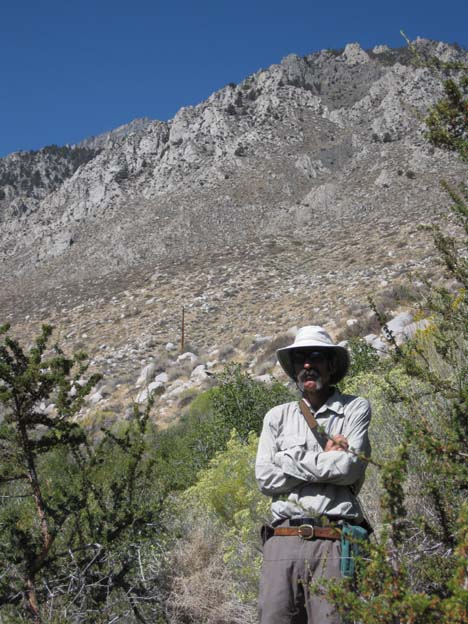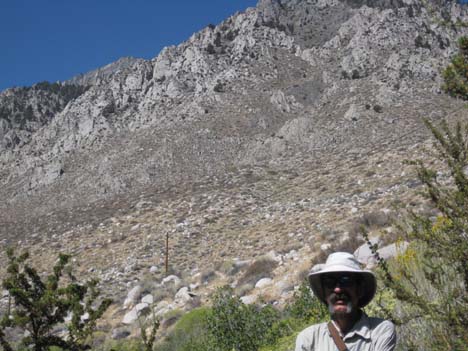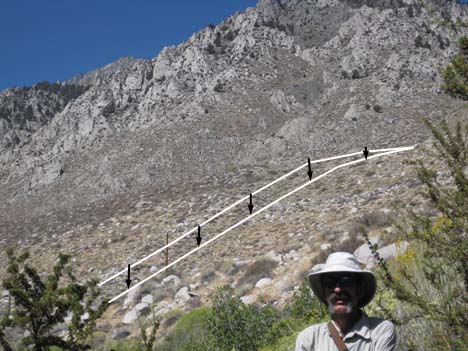Continuing with the recounting of geological sights in the Owens Valley, California, area… This one is in the Pine Creek area. Take a look at this photo:
No, that’s not just a portrait of Jeff Lee and his awesome handlebar mustache. Look behind Jeff, on the hillside above.
See the little step down that the hill takes? Let’s zoom in:
Still can’t see it? Here, allow me to annotate it for you:
That’s a fault! A normal fault, with the Jeff side of the landscape dropping down relative to the mountain side (in the distance). Great, you might think. A subtle fault scarp. Big deal.
Oh, but you should not be so quick to dismiss it! After all, the material that the fault cuts across turns out to be a significant clue to the timing of when this fault happened.
This Google Map shows these two very well-developed lateral moraines extending out of Pine Creek Canyon:
In the Pleistocene, a valley glacier glided down out of the Sierran highlands into the Owens Valley to the east. As it flowed, it brought ground-up Sierran rocks down with it, depositing the sedimentary debris as glacial till. The fault above cuts through the northern lateral moraine. The moraines (made of till) are therefore Pleistocene in age, and since the fault cuts across the moraines, it must be more recent than the Pleistocene.
This is not a shocker: the boundary between the Sierra Nevada and the Owens Valley is well known to be a normal fault, as are most of the recent faults in the Basin and Range province. But being able to say “ten feet of offset have occurred on this fault since the Pleistocene” is a significant piece of data.
Cool, huh?



